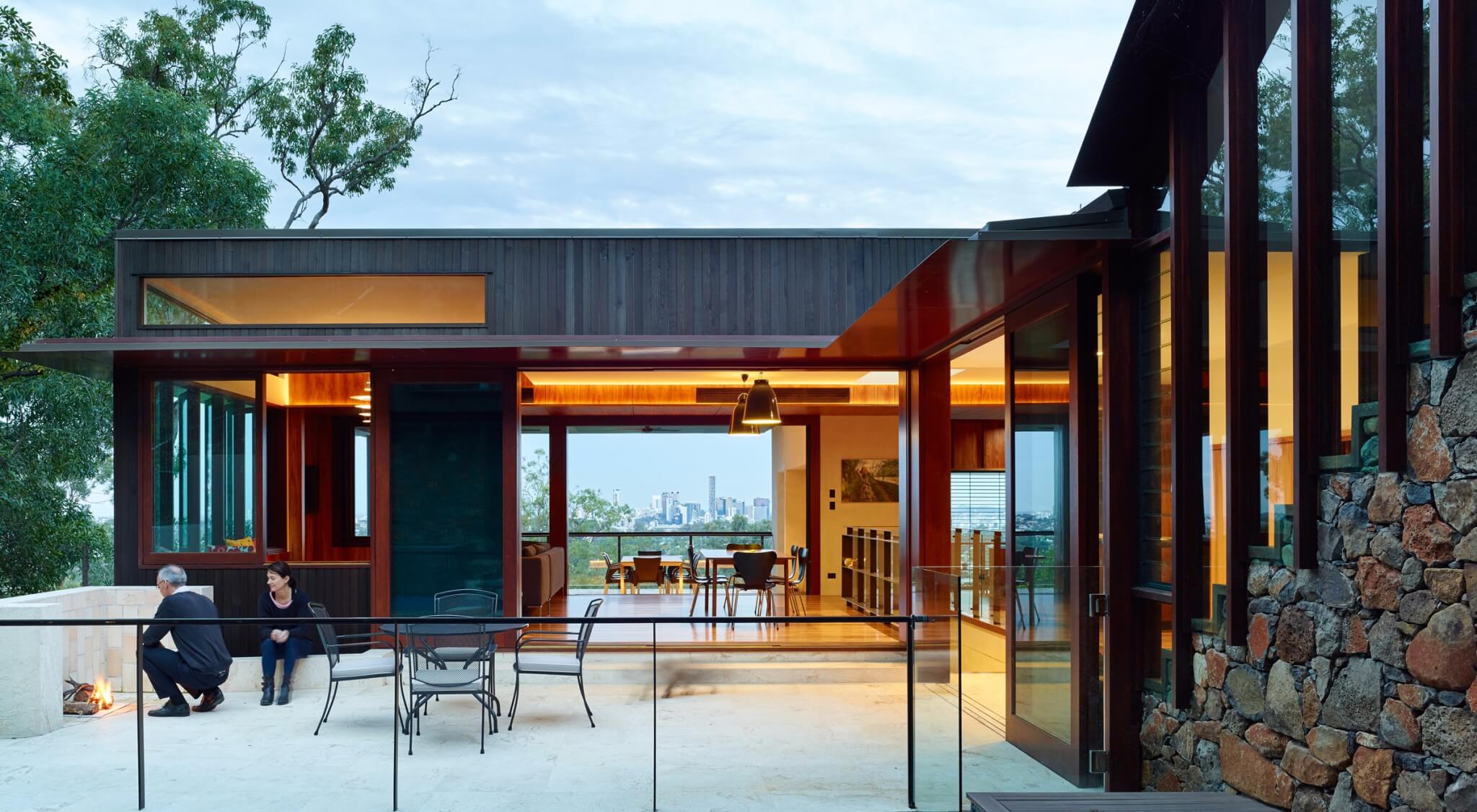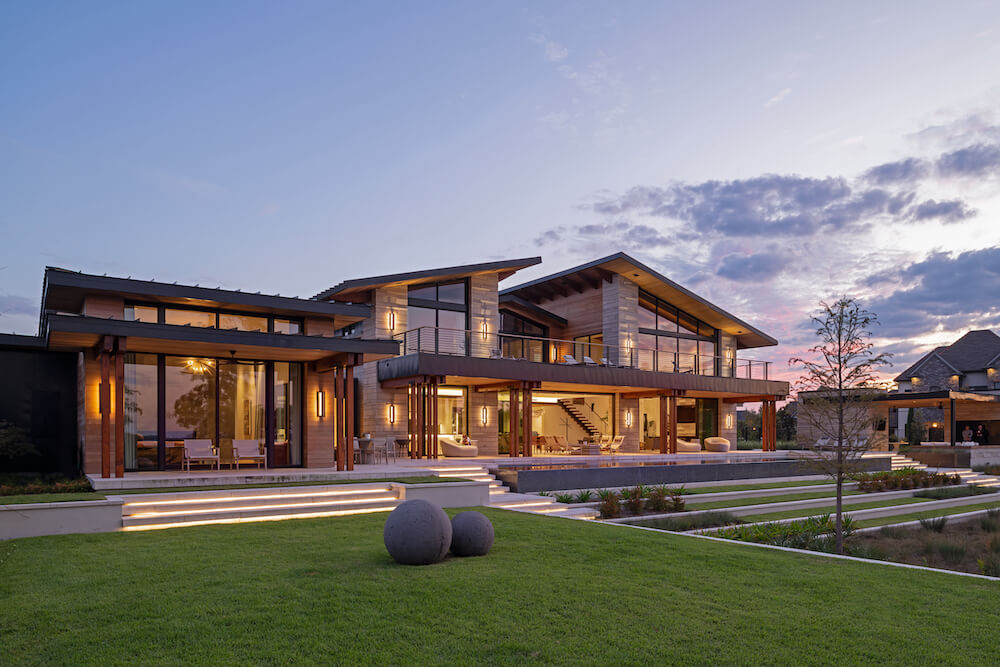Residential Interior Architect: Transforming Your Interior Spaces into Works of Art
Residential Interior Architect: Transforming Your Interior Spaces into Works of Art
Blog Article
Top Patterns in Residential Architecture You Must Know About
As residential style continues to advance, a number of engaging patterns are forming the way we create and inhabit our space. Trick developments such as lasting building techniques, the integration of wise home innovation, and the rise of modular homes emphasize a significant change in the direction of both functionality and environmental responsibility. Furthermore, ideas like open plan living and biophilic style are redefining our communication with space and nature. Recognizing these fads not only informs style options yet also exposes more comprehensive ramifications for lifestyle and neighborhood - residential house architect. What might these technologies mean for the future of domestic living?
Sustainable Building Practices
A boosting number of domestic projects are embracing lasting structure methods, driven by a growing understanding of ecological impact and power performance. This change is characterized by the combination of green products, energy-efficient layouts, and ingenious building techniques. Building contractors and home owners are significantly focusing on using renewable energies, such as bamboo and recycled steels, which not just decrease the carbon footprint yet additionally boost the longevity and visual appeal of buildings.
Integrating energy-efficient systems is another critical facet of sustainable building - residential house architect. Features such as high-performance insulation, energy-efficient windows, and solar panels are becoming standard in brand-new domestic styles. These components not only add to lower power consumption yet additionally offer significant lasting financial savings for house owners
Furthermore, the format of lasting homes frequently emphasizes natural light and ventilation, reducing the reliance on fabricated lights and climate control systems. Landscape design practices, such as xeriscaping, more advertise sustainability by minimizing water usage.
As the demand for lasting living remedies remains to climb, the residential design industry is poised to adjust and innovate, ensuring that future homes are not just ecologically liable but useful and also comfortable for their owners. - residential house architect
Smart Home Innovation
Smart home modern technology is reinventing the means home owners connect with their living areas, boosting power, benefit, and protection management. This innovative method integrates different gadgets and systems, allowing individuals to control their homes remotely or via automated procedures. Central to this fad is making use of wise devices such as thermostats, lighting, safety electronic cameras, and home appliances, all linked by means of the Web of Points (IoT)
Among one of the most enticing functions of clever home modern technology is the capacity to tailor setups for optimal energy efficiency. Homeowners can monitor power usage and adjust air conditioning, home heating, and illumination based on their routines, substantially decreasing utility prices. Additionally, sophisticated safety and security systems equipped with clever locks and surveillance cameras provide tranquility of mind, enabling remote tracking and notifies to potential security breaches.
Integration with voice-activated aides enhances customer experience, enabling house owners to control gadgets with basic voice commands. As technology remains to develop, the possibility for smart home systems to boost lifestyle expands, making them an important consideration in modern-day property design. Ultimately, wise home modern technology is not simply a trend however a basic change towards much more smart living environments.
Open Idea Living
Open concept living has become a specifying feature in modern residential design, defined by the elimination of typical obstacles in between rooms. This design viewpoint promotes fluidness and connection within the home, permitting a seamless shift between areas such as the kitchen area, dining, and living spaces. By getting rid of partitions and walls, open principle layouts produce a sense of spaciousness, promoting a welcoming environment that improves social communication.

Furthermore, this approach to household style straightens with minimalism, focusing on functional simplicity and visual coherence. Home owners appreciate the convenience of these layouts, which can be quickly adapted to show individual style view website through furnishings plan and style. As open concept living proceeds to get traction, it stays a testimony to developing family members dynamics and the desire for homes that improve link and convenience.
Biophilic Design
Biophilic style has ended up being increasingly significant in property design, stressing the intrinsic connection between humans and nature. This layout ideology looks for to incorporate natural environments right into living rooms, thereby cultivating a sense of health and boosting the quality of life for residents. By including features such as all-natural light, plants, and natural products, biophilic design promotes an unified partnership in between interior settings and the all-natural world.
Key aspects of biophilic style consist of huge windows that supply content unblocked sights of outside landscapes, living wall surfaces that present plant right into insides, and open layout that encourage airflow and natural light infiltration. Water attributes, both within and outside the home, offer to produce comforting environments and improve sensory experiences.
In addition, making use of sustainable materials not only sustains ecological stewardship yet additionally contributes to much healthier interior air high quality. As understanding of ecological concerns rises, home owners are significantly focusing on layouts that reflect their connection to nature. In significance, biophilic design not only elevates aesthetic allure however also addresses psychological and mental demands, making it an important fad in modern property design.
Modular and Prefab Residences

Additionally, prefab and modular homes are designed with sustainability in mind. Many suppliers use energy-efficient systems and green products, such as photovoltaic panels and progressed insulation strategies, contributing to decreased energy usage and lower utility bills for property owners. The adaptability of style options enables customization, satisfying varied practical requirements and visual choices.
As the demand for budget-friendly real estate remains to check this increase, modular and prefab homes offer a sensible solution, dealing with both financial and ecological challenges. Communities are significantly acknowledging the potential of these frameworks, incorporating them into rural and city setups. In general, the pattern toward modular and prefab homes symbolizes a change towards much more sustainable, effective, and adaptable living settings, making them a crucial facet of modern domestic architecture.
Verdict
Sustainable building methods and smart home technologies improve performance and convenience, while open idea living and biophilic style foster social interaction and a connection to nature. The increase of prefab and modular homes offers adjustable and budget friendly services, showing a wider shift towards useful and responsible living.
Key growths such as sustainable building practices, the assimilation of clever home modern technology, and the increase of modular homes highlight a significant change in the direction of both performance and environmental duty.The rise of modular and prefab homes has changed the property design landscape, providing innovative remedies for reliable and sustainable living.In addition, modular and prefab homes are developed with sustainability in mind. Overall, the fad toward modular and prefab homes symbolizes a change towards much more sustainable, reliable, and adaptable living atmospheres, making them a critical element of contemporary residential style.
Sustainable structure methods and wise home innovations improve effectiveness and convenience, while open principle living and biophilic style foster social communication and a link to nature.
Report this page